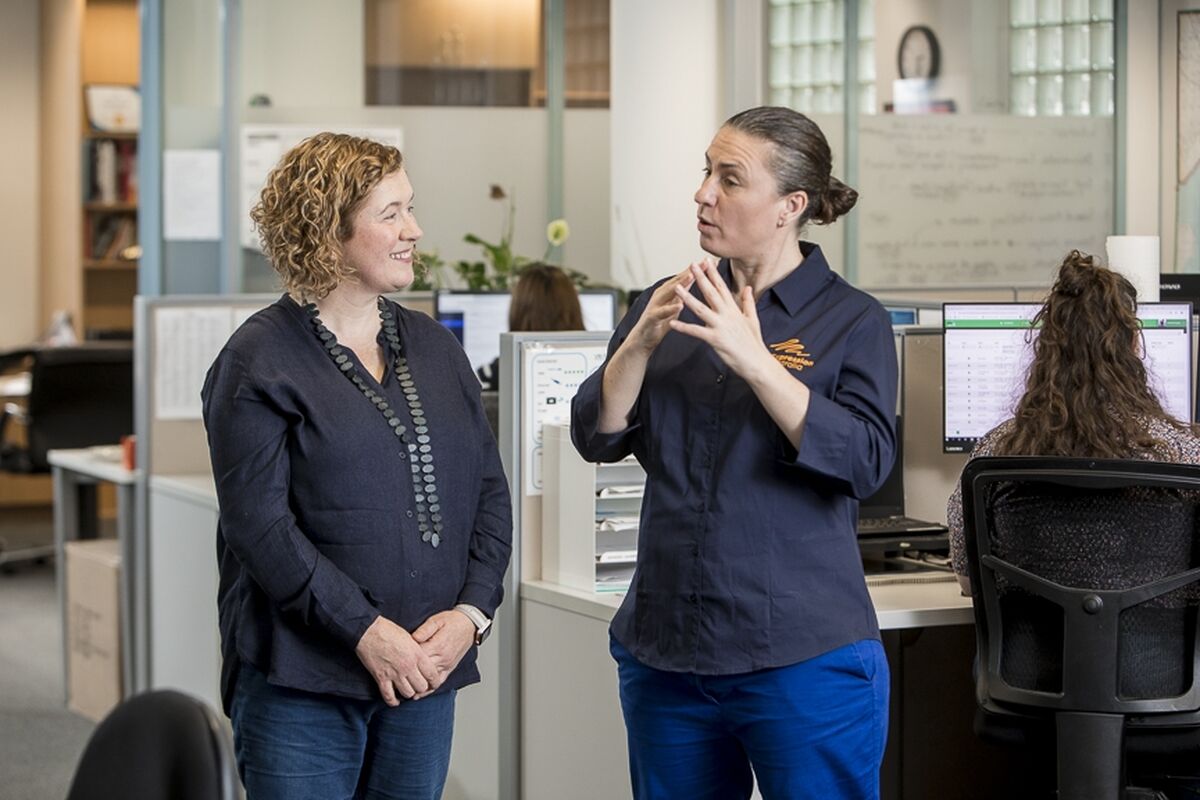Interpreters work in a diverse range of public and private settings to support communication between Auslan users and English speakers, and to provide access to information for the Deaf community.
Settings in which interpreters work include medical appointments, weddings and social events, schools and workplaces. Interpreters also work in more public settings like media conferences, sporting events and theatre performances.
Wherever you see interpreters working, their main purpose is to ensure access to information and communication between Auslan users and English speakers.
You can learn more about booking and working with interpreters at the links below (links open in a new window)
Types of Interpreters
Within the Deaf, Deafblind and Hard of Hearing communities, there are 3 types of interpreters you might meet:
Auslan Interpreters
Auslan interpreters listen to spoken English and produce equivalent meaning in Auslan, or watch a Deaf person signing in Auslan and speak an equivalent meaning in English. Auslan interpreters most often interpret simultaneously.
For example, when politicians give speeches in English on the news, the Auslan interpreter is interpreting the message for the Deaf community live in real time. This is simultaneous interpreting.
Deafblind / Tactile interpreters
People who identify as being Deafblind, or are Deaf and have a vision impairment, use various modes of communication. They may use tactile communication, visual frame, or Deafblind fingerspelling.
When a person requires tactile signing, the Deafblind person places their hands over the interpreter’s and reads the signs through touch and movement.
When a person requires visual frame interpreting, the interpreter will need to sit closer to the Deafblind person and make sure their signing can be seen within the persons’ specific range of visual field. This might mean that the interpreter holds their hands higher in space than they would when interpreting for a Deaf person without a vision impairment.
If a Deafblind person requires the use of Deafblind fingerspelling, the interpreter will produce the alphabet directly on the Deafblind persons' hand.
You can learn more at Deafblind Australia's website: https://www.deafblind.org.au/ (link opens in a new window).
Deaf interpreters
Deaf interpreters are people who are Deaf and are highly skilled in translating from one language to another. Often Deaf interpreters will use their expertise in visual communication to convey a message to a Deaf person who has a limited knowledge of Auslan.
Deaf interpreters often work together with an Auslan interpreter who will first interpret English to Auslan for the Deaf interpreter.
IMPORTANT: Remember to book an Auslan interpreter when requesting a Deaf interpreter.







